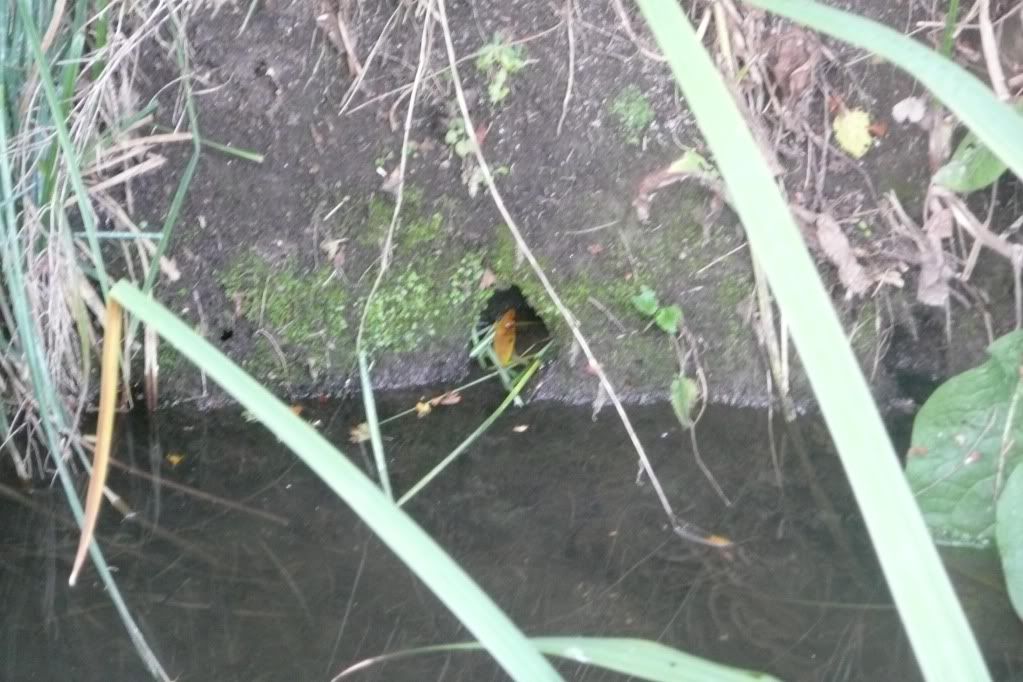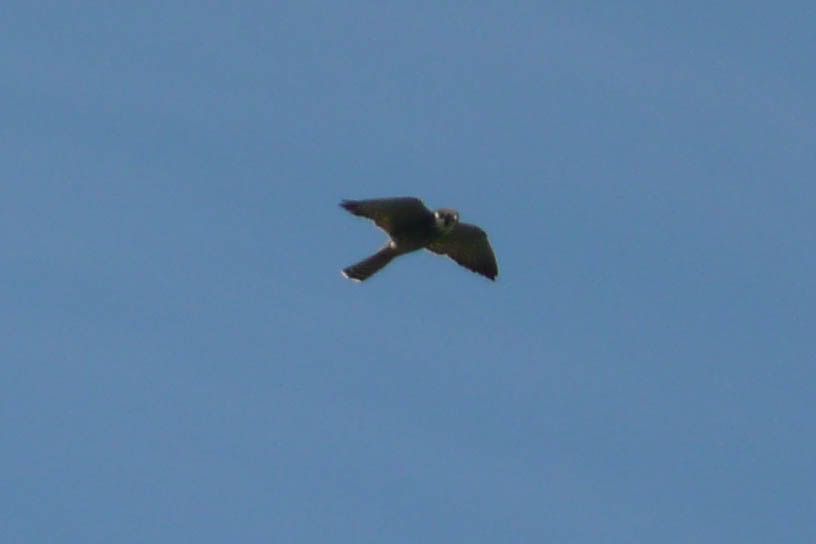Sandford Brook is a tributary of the Ock and has featured several times in this blog. Most recently in May this year where the possibility of water vole burrows was discussed:
http://viewsoftheock.blogspot.com/2010/05/signs-of-life-on-sandford-brook.html
http://viewsoftheock.blogspot.com/2010/05/signs-of-life-on-sandford-brook.html
Now four months later, the meadow has been cut it is easier to explore along the bank, but where there was once possible water vole signs, now it is just dead sedge and no obvious signs of feeding or burrows:
.
.
.
Further upstream, is a burrow made by a different animal. At first sight it might appear to have been made by a water vole as there is cut grass stems in the entrance:.
.
.
But with a bit of patience, the burrows creator reveals itself, a crayfish. Although not obvious in this picture (it was getting very dark), it is the white blotch on the hinge of the claw that marks it as one of the non-native crayfish:
.
.
Maybe the earlier signs were false alarms, but at the moment there seems to be no obvious signs of water voles at this part of Sandford Brook. Now autumn is here, the days are getting longer and the breeding season is over, the chance of finding any definite signs is remote.
However, further upstream, it has been a good year for water voles on Sandford Brook with several sightings from the hide at the Lasford Len Fen nature reserve, one of the reserves that make up the Cothill Fens.
.
.
.
Further upstream, is a burrow made by a different animal. At first sight it might appear to have been made by a water vole as there is cut grass stems in the entrance:.
.
.
But with a bit of patience, the burrows creator reveals itself, a crayfish. Although not obvious in this picture (it was getting very dark), it is the white blotch on the hinge of the claw that marks it as one of the non-native crayfish:
.
.
Maybe the earlier signs were false alarms, but at the moment there seems to be no obvious signs of water voles at this part of Sandford Brook. Now autumn is here, the days are getting longer and the breeding season is over, the chance of finding any definite signs is remote.
However, further upstream, it has been a good year for water voles on Sandford Brook with several sightings from the hide at the Lasford Len Fen nature reserve, one of the reserves that make up the Cothill Fens.



















